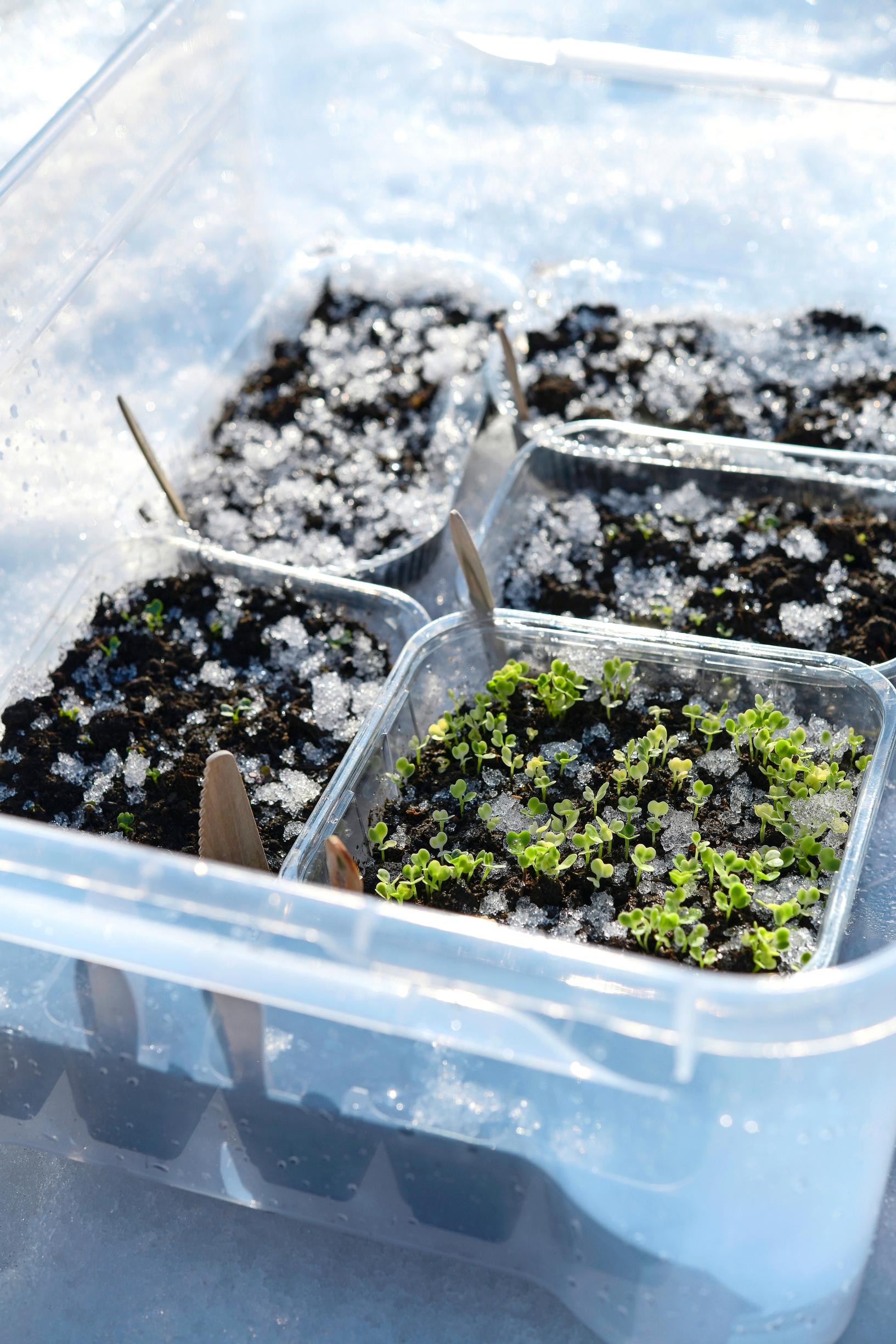
Winter sowing yields sturdy plants without cluttering your home with pots
Did you know you can start growing seedlings outdoors in winter? January–March is an excellent time for winter sowing. Growth is slow but robust in the cool outdoor conditions, and seedlings often catch up with those started indoors. If you’re new to this technique, try a few easy plant varieties first and use only part of your seeds.
Avoid seedling overload indoors
One of the biggest advantages of winter sowing is that you can handle your seedling cultivation entirely outdoors, from start to finish. If you have only a couple of dimly lit windowsills and want to grow seedlings for your cottage or allotment, winter sowing could be an excellent choice for starting many flowers and edible crops.
Sow plants that thrive in cool conditions
Winter sowing works best for plants that only need a short pre-cultivation period and like cooler conditions, such as kale, lettuce, violas, and sweet peas. However, tomatoes, chilies, globe artichokes, and other plants that require a long seedling phase or plenty of warmth must be grown indoors.
There are also risks with this method, so begin by sowing only a portion of your seeds.
Learn winter sowing with parsley
Familiarize yourself with this approach with a few easy plants, like parsley, spinach, or common marigold. Many plants can be grown this way, but remember that it doesn’t work for all of them. For instance, the large seeds of pumpkins, corn, beans, and nasturtium will rot in cold, wet soil.
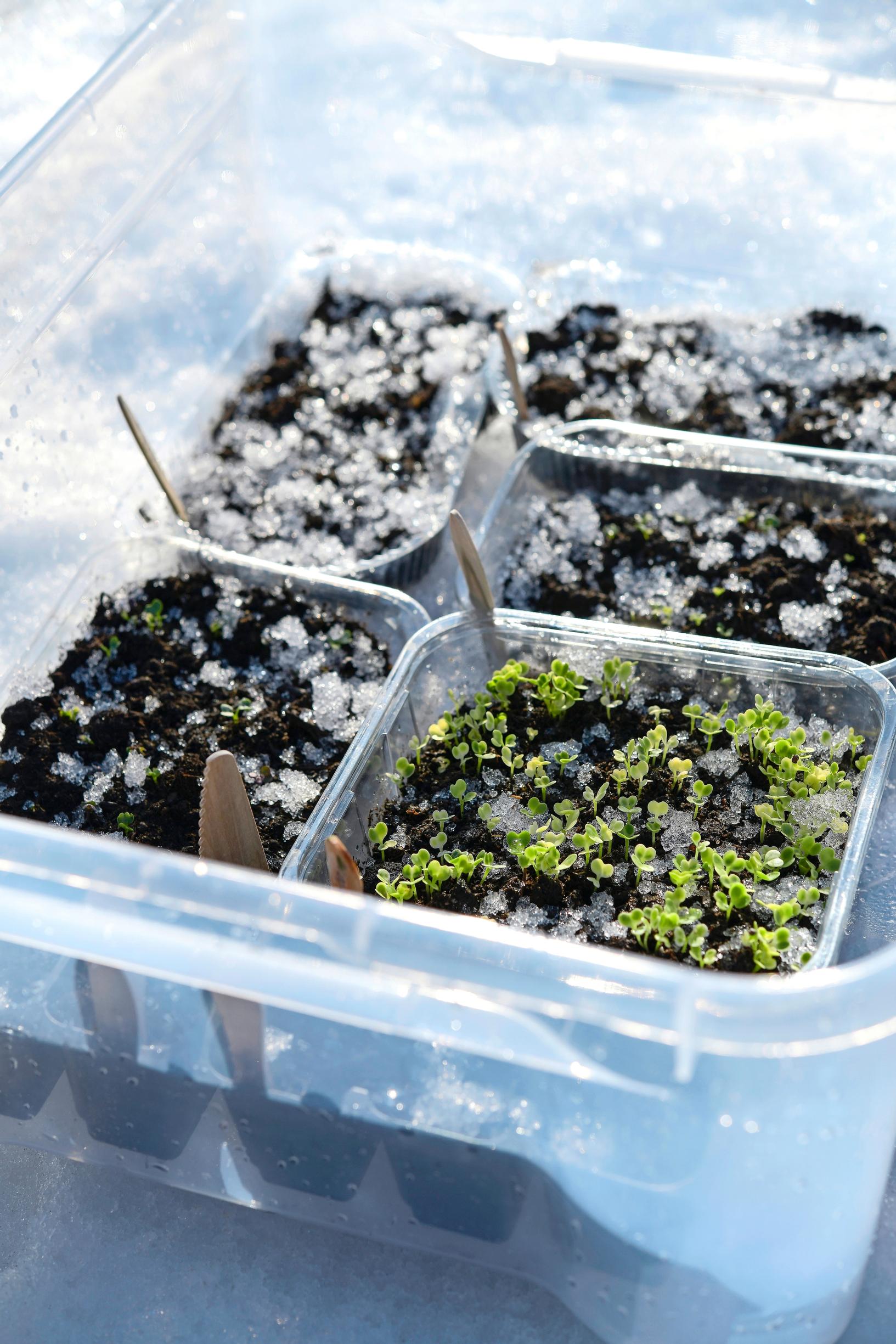
Stagger your harvest
In cool outdoor conditions, growth is slow but robust, and seedlings often catch up with those grown indoors. Furthermore, smaller seedlings tend to take off more vigorously after transplanting compared to larger ones. You can also stagger your harvest by sowing some seeds directly in the ground in May or June.
Sow gradually
The idea behind winter sowing is that your seeds wait outdoors for the temperature that allows them to germinate. Therefore, you can sow seeds continuously throughout the winter. For instance, if you sow the cool-loving viola in January or February, you could move the seedlings in April or May to a cold frame or greenhouse, or cover them with two layers of horticultural fleece outdoors. Viola tolerates temperatures down to about –5 °C, so protect it from frost with fleece as needed.
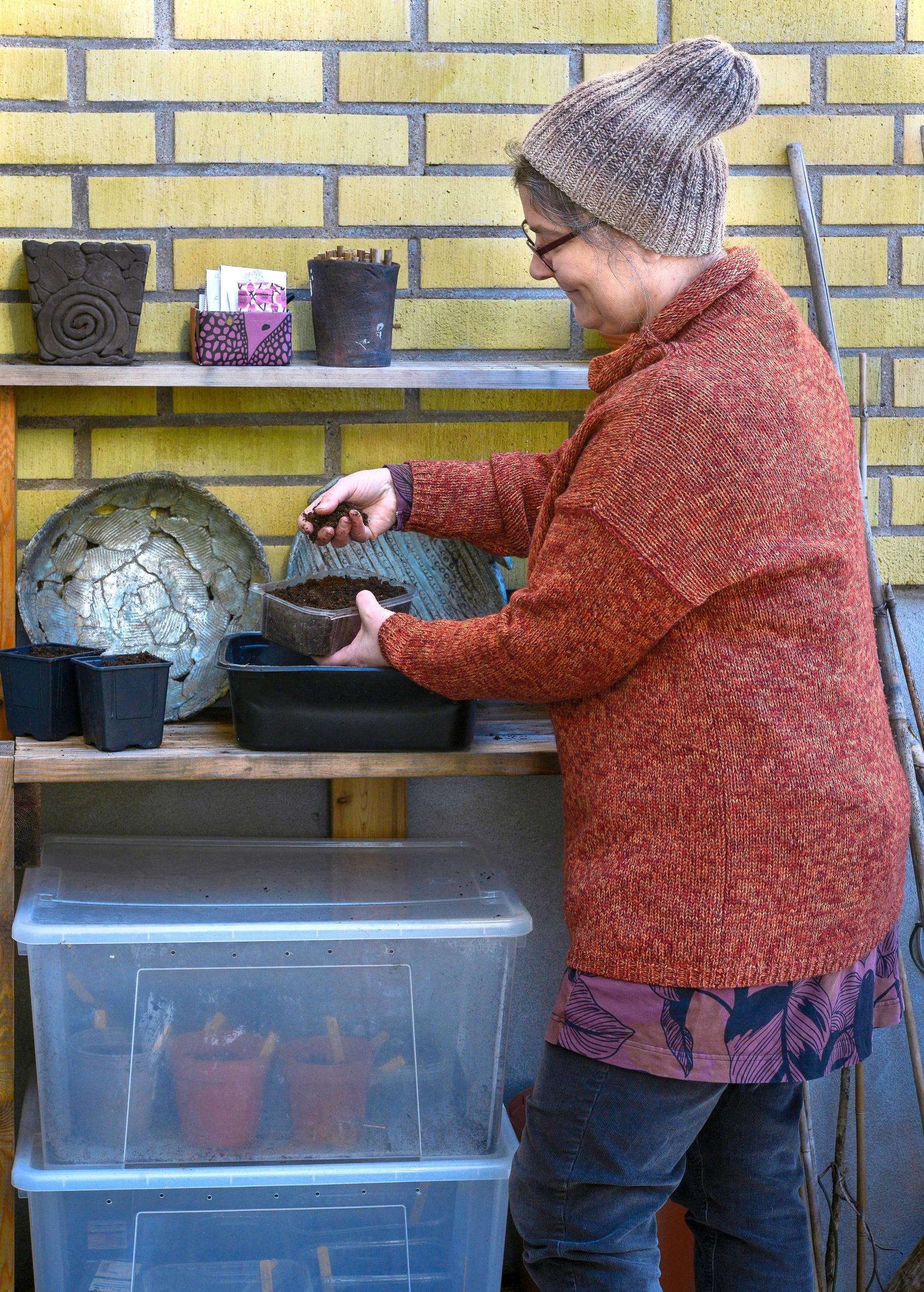
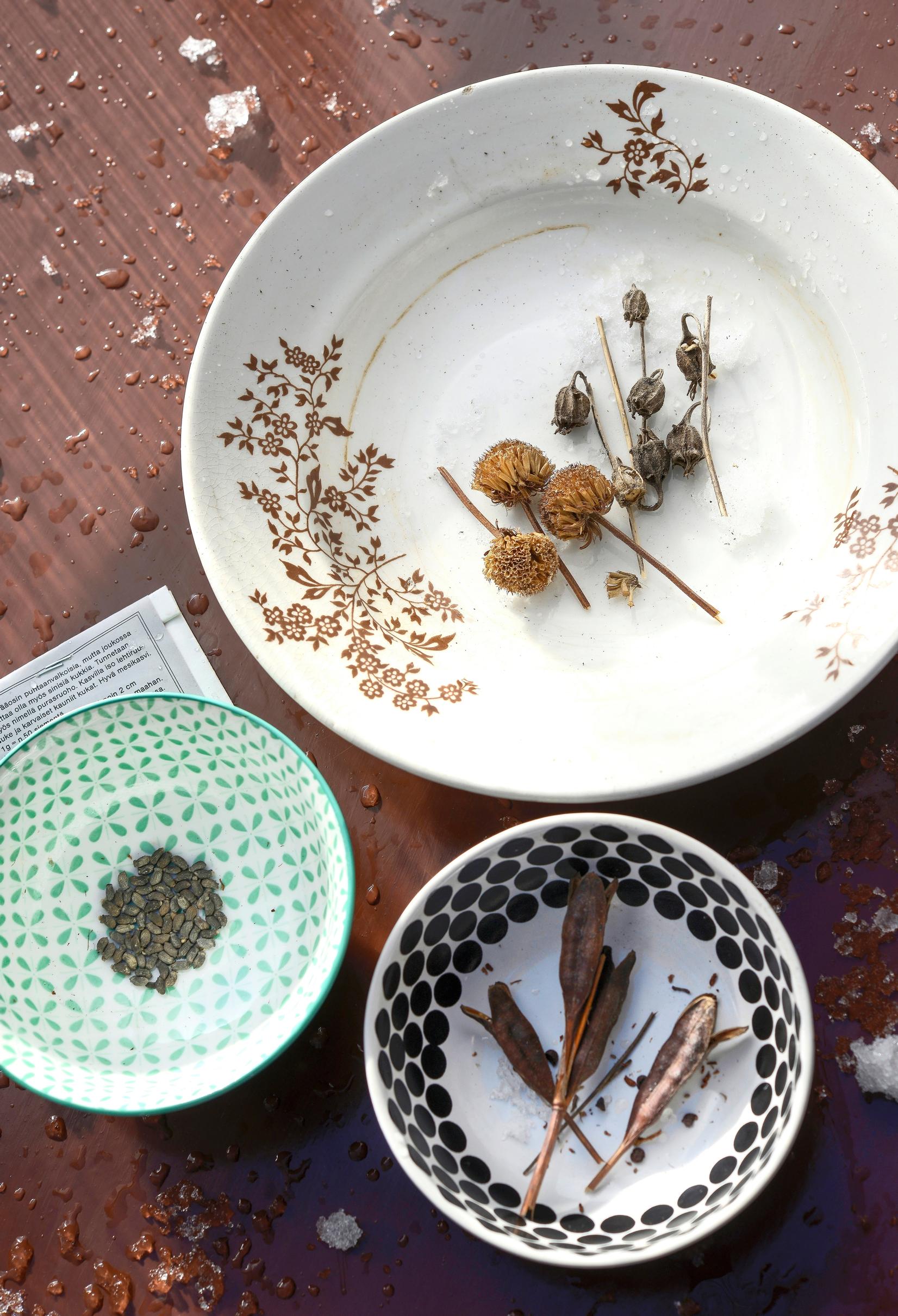
Earlier harvest
When you sow seeds in winter, you can enjoy an early harvest of crops like pak choi, mizuna, radishes, spinach, arugula, lamb’s lettuce, lettuce, and spring onions. Alternatively, you can sow these seeds directly in a cold frame or greenhouse in March or April. Remember that biennial plants like chard might be stimulated to flower during their first year due to fluctuating winter and spring temperatures.
Naturally cold conditions
In cool outdoor conditions, perennials and many hardy wild plants produce lush, sturdy seedlings. You can either place your sowings directly outside or keep them in the warm indoors for the first week. A warm period before cold stratification benefits many species and does no harm to plants that need a cold treatment.
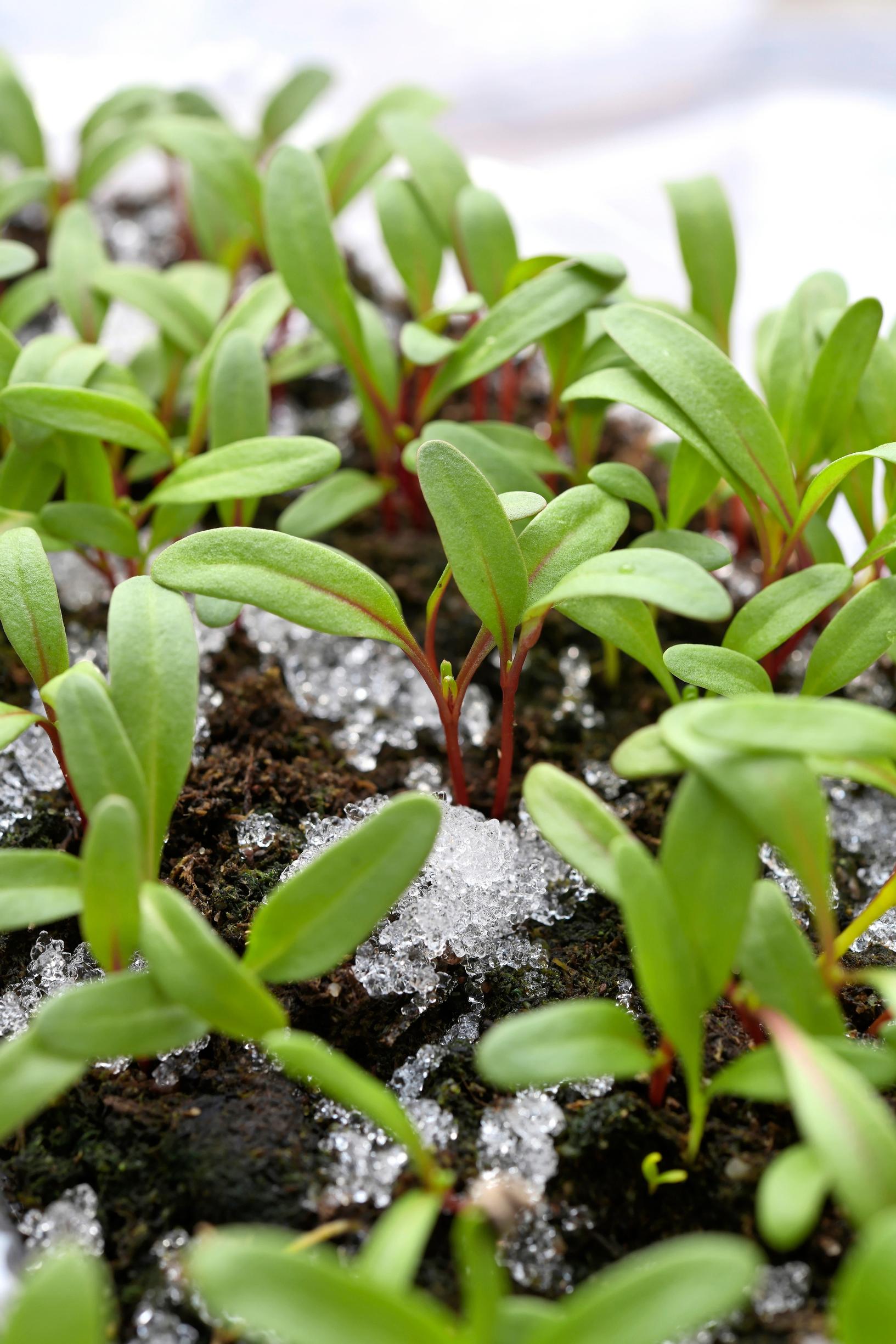
Replace autumn sowing
Winter sowing is ideal for cornflower, chamomile, parsley, poppies, and other plants that can also be sown in autumn. In a garden bed, autumn-sown seeds can be subject to excessive moisture, ice damage, or mice. In a plastic box, however, you can better the control conditions for winter sowings.
Make use of recycled materials and set aside boxes, jars, and plastic crates for winter sowing.
Sow in a pot or box
Sow the seeds as you normally would, either in trays or in small clusters in pots. Use clean containers with drainage holes.
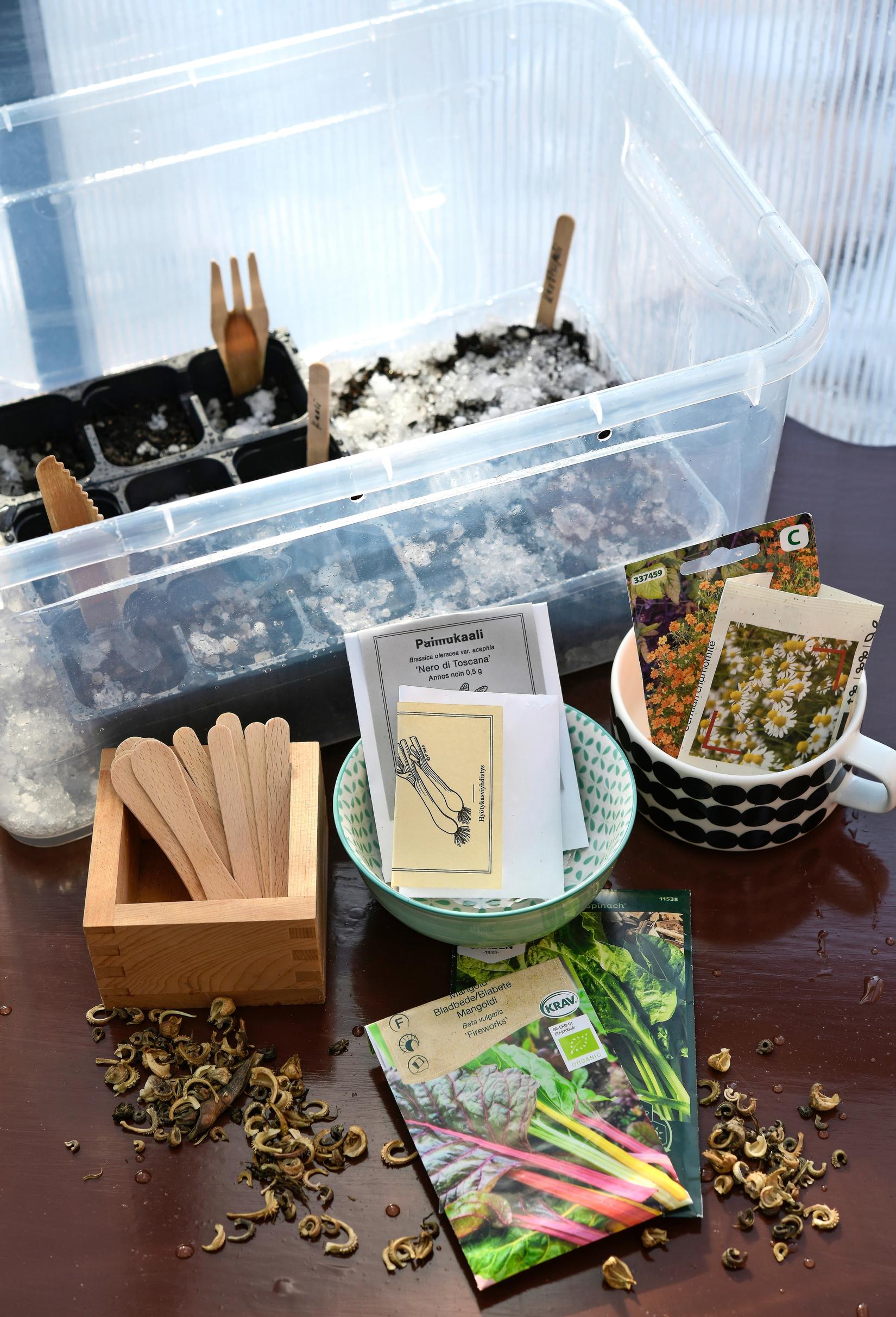
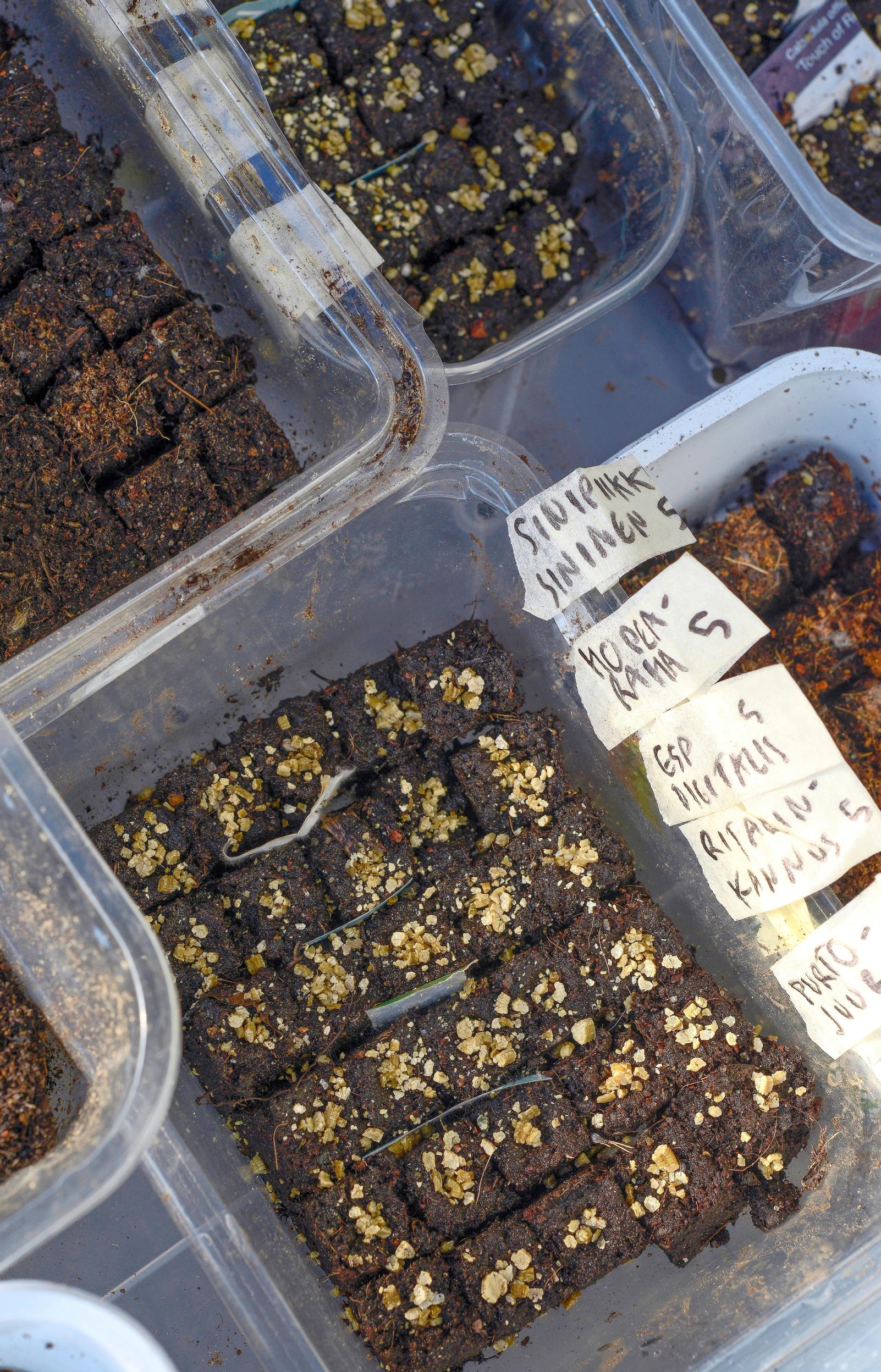
Choose an airy potting mix
Choose an airy, well-draining potting mixture for sowing. Some gardeners prefer lightly fertilized, clean seed compost, while others use homemade mixes. One option is to place general-purpose potting soil at the bottom of your container and then add a few centimeters of seed compost on top.
Protect your plantings in a box
Place your sowing containers in a plastic box with holes on the sides. Cover them with a perforated lid or a few boards, then move the box directly outdoors to a spot sheltered from rain, such as against a wall or in a garden storage. You can also keep the boxes in a greenhouse.
Note: If you prefer not to make holes in the box, simply flip it upside down to protect your seedlings. However, using a box with holes makes it easier to move the seedlings around as needed.
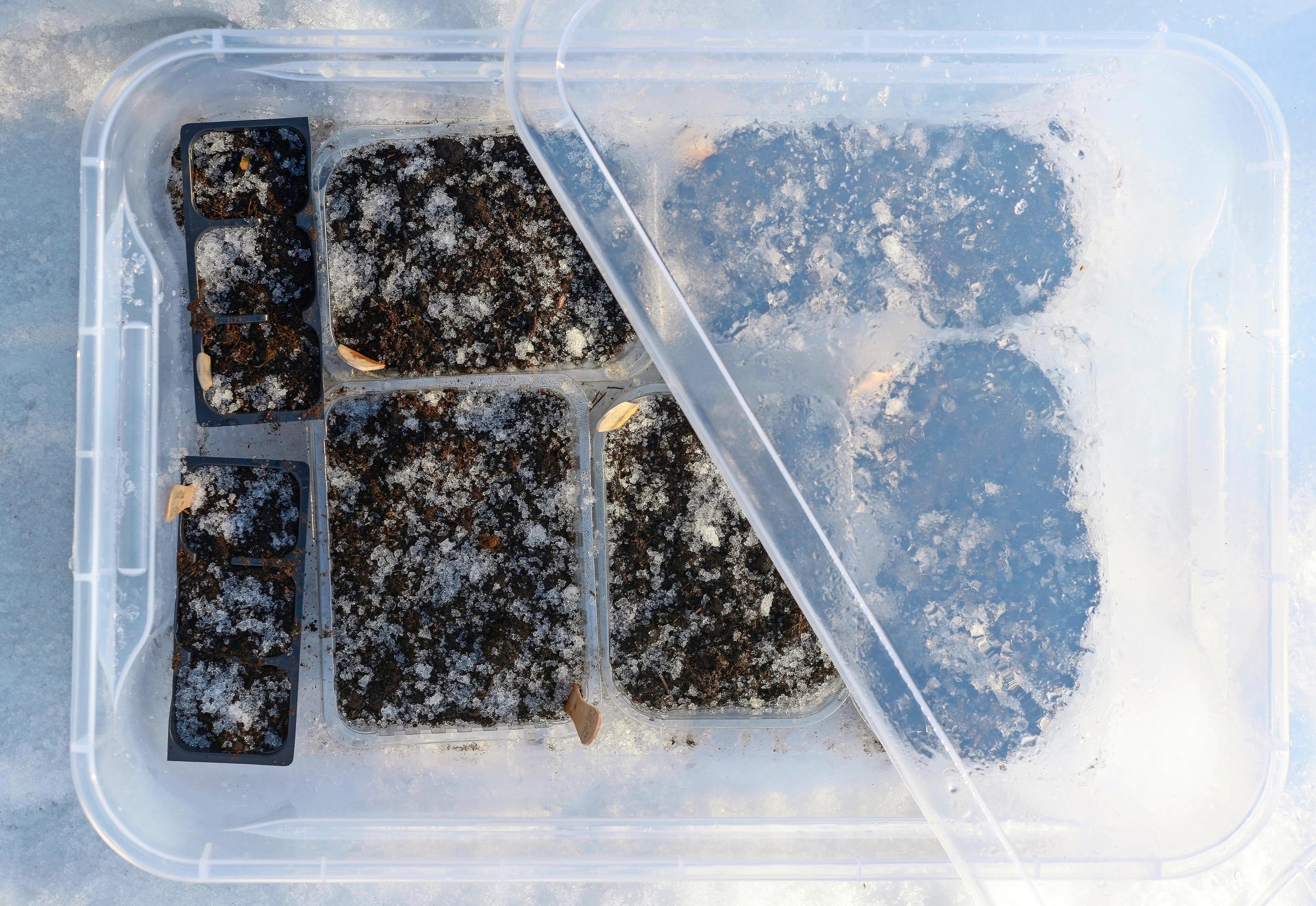
Watch out for excessive moisture
Check your sowings at least once a week to ensure the soil stays appropriately moist. Also, be careful not to let damp seeds dry out fully. The germination stage is especially vulnerable when the embryonic root starts growing. In a greenhouse, the soil can dry out faster than you might anticipate once it warms up.
Moisten if necessary
If the soil surface feels dry, moisten your sowings by watering, misting, or sprinkling snow on top. You can also scatter snow over a tray or pot with already emerged seedlings. Avoid overwatering—excessively wet soil can cause the seeds to rot.
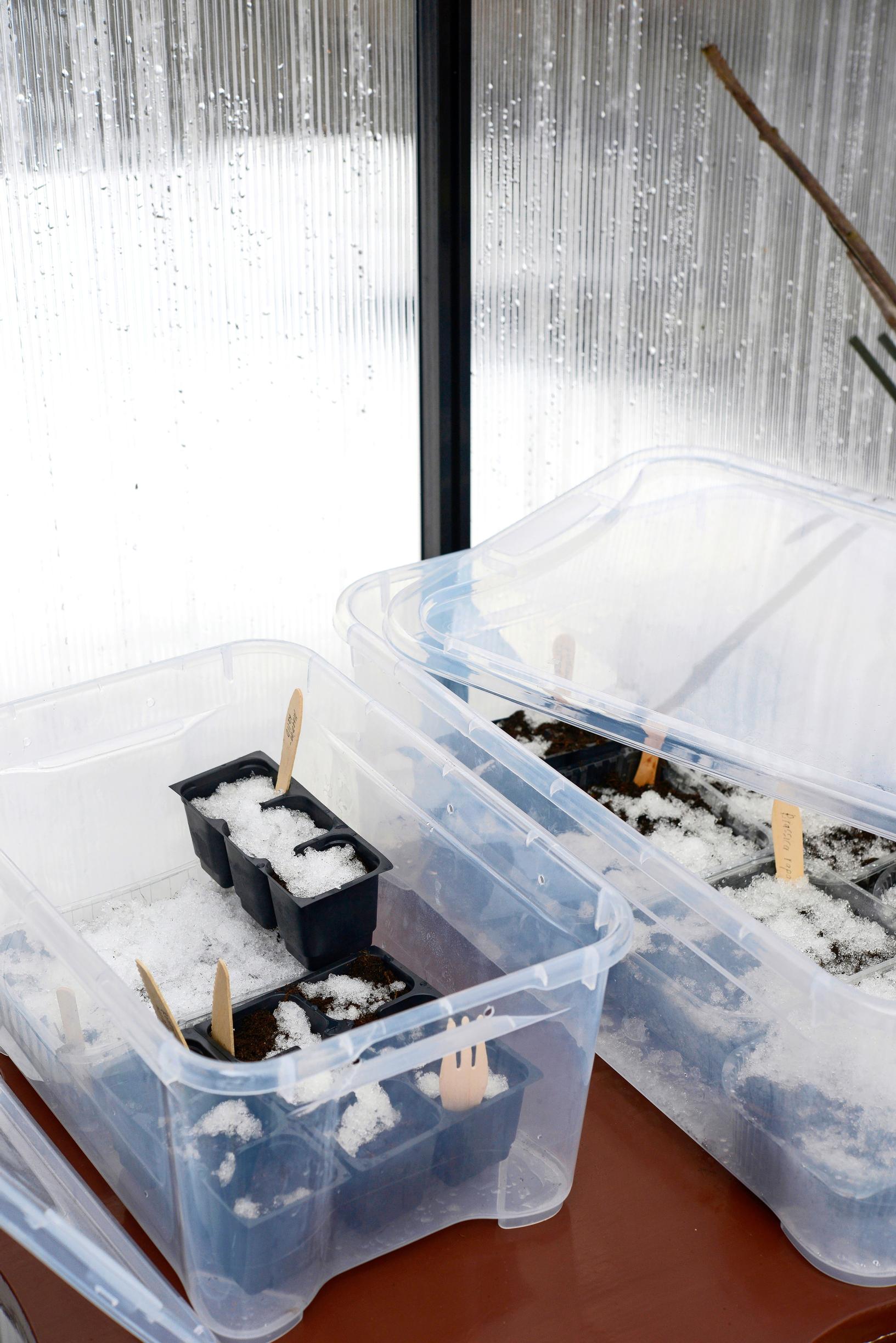
Winter sowings need attention and care. Don’t leave them to fend for themselves!
Remember to ventilate
Moisture can easily accumulate inside a lidded plastic box, potentially harming seeds and seedlings. Ventilate the box periodically by lifting the lid, and if necessary, enlarge the ventilation holes or remove the lid completely. Once the seedlings have sprouted, you can move those containers into separate boxes, as they generally require more air circulation and water than unsprouted sowings.
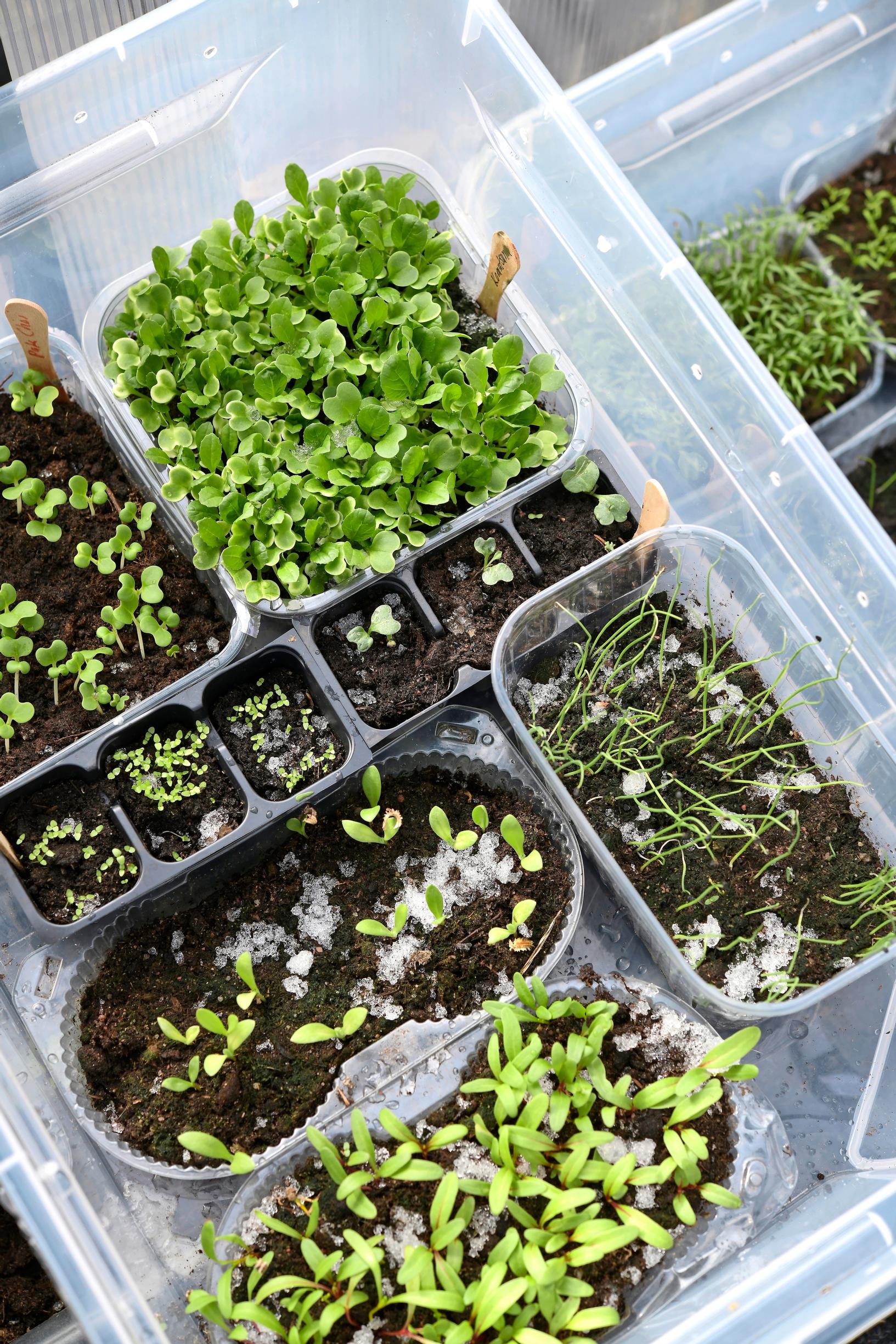
Transplant or plant out
Care for your seedlings similarly to those started indoors. Because growth is slower outdoors, there’s no urgent need to move thinly sown seedlings into individual pots. You can also plant them directly in the ground, using shade cloth, horticultural fleece, or a protective dome to prevent wilting.
Into a bigger container
If seedlings in pots become root-bound and you must postpone planting them out, move them into a larger container. Otherwise, you can plant the seedlings directly in the ground.
Protect from frost
Seedlings sown in winter and matured in cool outdoor conditions are already adapted to the weather and don’t require hardening off like those grown indoors. Still, watch out for chilly of cold nights, especially after a warm stretch. In such cases, move the seedlings back into boxes or cover them with two or three layers of fleece. You can also place them in a greenhouse or on a covered porch.
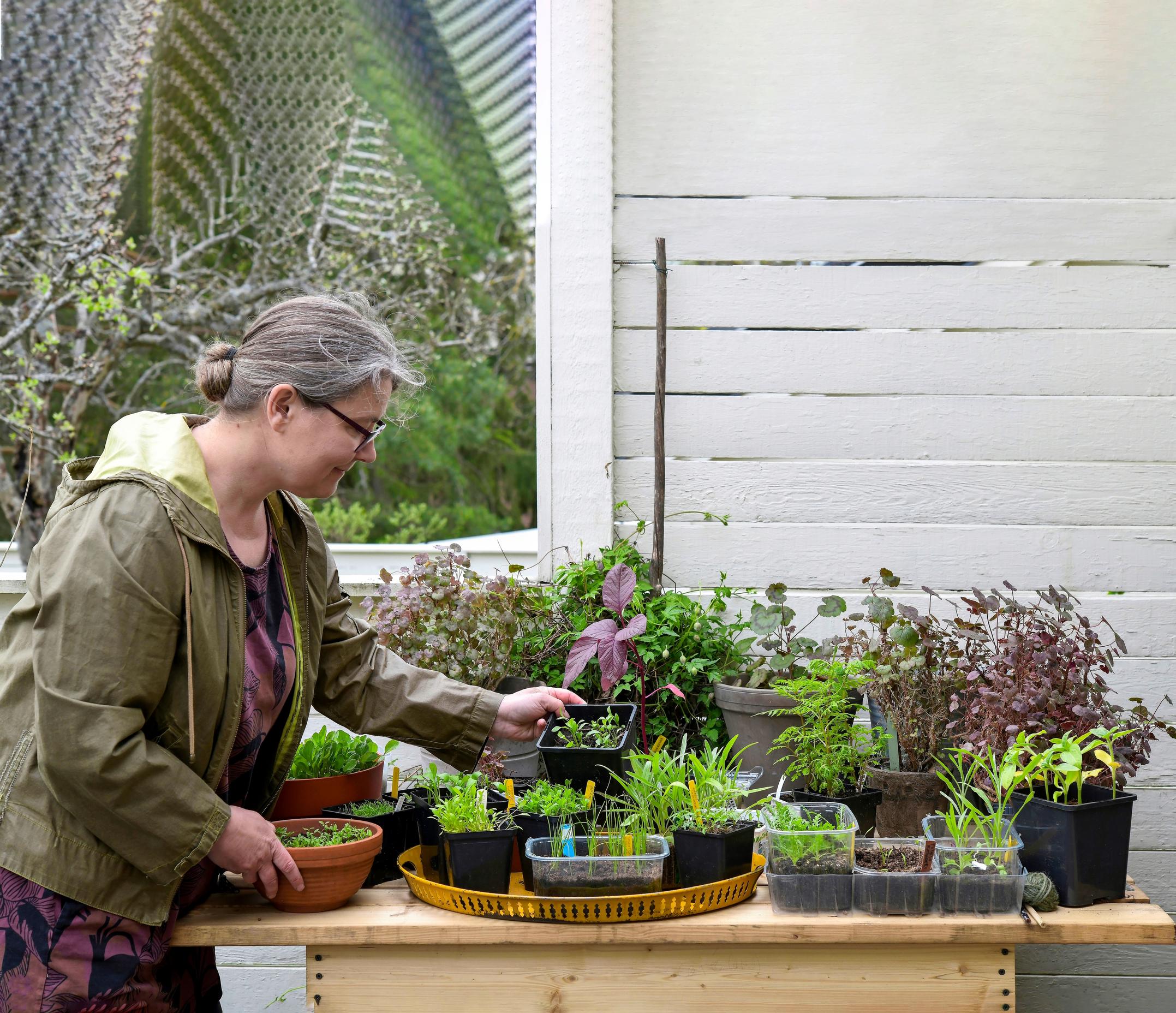
Photo locations: The gardens of Karoliina Pertamo and Ritva Tuomi in Espoo, Finland.


